Why a Tobacco Company Made the 2018 100 Best Corporate Citizens List
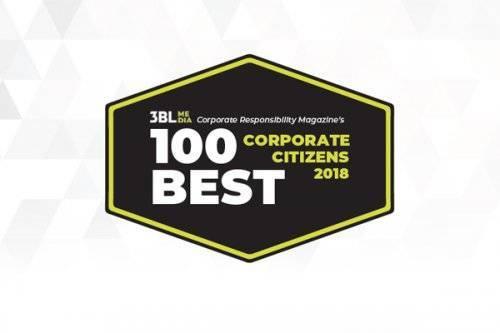

In the months since 3BL Media launched this year’s 100 Best Corporate Citizens list, I’ve been asked one question more than any others: why is Altria in the top ten? Don’t their products kill people?
Yes—and the company still earned its place as “one of the best corporate citizens.” How is this possible?
The answer lies in the list’s methodology, which focuses on transparency and rigorous reporting—on the company’s practices and behaviors, not its products. By these measures, Altria, as a company, scored very highly. A third party evaluator contracted by us, ISS Ethix, determined the rankings, guided by standards of publicly available records and detailed reporting, not by industry sector or end product.
Let’s take a step back.
The 100 Best Corporate Citizens List, in its 19th year of publication, force ranks the Russell 1000 companies (U.S.-based, publicly traded) on 260 ESG data points of disclosure and performance measures — all harvested from publicly available information in seven categories: environment, climate change, employee relations, human rights, governance, finance, and philanthropy & community support. There’s no fee to be included. Since the rankings are determined by a third party based on publicly available information, there’s no way to directly influence the rankings by external factors or values.
We do have a qualitative screen to catch companies that have had reputation concerns or behave as bad actors in the relevant calendar year. This past year we used the UN Global Compact as such a screen. Twelve wonderful companies got red or amber signals, flagging negative issues, and we published that information as well.
But Altria didn’t happen to get a warning flag in 2017—what gives? They weren't a party to any serious flagged issues in the calendar year of the ranking. If our flag included products that are associated with health concerns, most food, beverage, CPG, entertainment, transportation and product manufacturing companies would be caught.
The 100 Best Corporate Citizens methodology is designed to favor transparency and rigorous reporting. As it happens, companies in “problematic” fields -- from extractives (mining), to defense (weapons), to “vices” like tobacco and alcohol —tend to be very strong on ESG performance because they have long made the connection between rigorous reporting and risk assessment. More than other companies, they get it that sustainability reporting is a direct path to risk analysis and is therefore good and necessary for the bottom line. Companies in other industries could learn from them about their in-depth reporting.
But still . . . Does this approach pass the sniff test?
My friend and colleague Henk Campher, VP of marketing at Salesforce.org, complained on LinkedIn:
This is why #CSR sometimes still struggle to be taken seriously. Altria ranked number 6 while Disney is number 100. The core product of one will kill you while the other aims to make you feel happy. Kill you the most responsible way possible? And Levi’s and Starbucks and Timberland do not even rank... Seriously...I understand Henk’s point. But consider the alternative—a screen based on subjective reputations, values, and on the perceived benefits of end products. That raises other issues of concern and is also open to question. When the results come to us from the third party evaluator, I can’t, for better or worse, change the rankings to suit my personal preferences. Even though I know I have good opinions, the Jen list is probably less useful than one based on objective 260 data points.
Henk named some great companies in his callout. Levi Strauss is private and therefore was ineligible—no public financial records, no formal reporting process, so no way to evaluate. Timberland did qualify through its parent company VF Corporation (#67). Indeed, Starbucks didn’t make the top 100, despite its “good company” reputation. Starbucks does a brilliant job communicating sustainability messaging about its coffee origins and the political issues of our time, and it still outperformed more than 80% of the Russell 1000. But after 15 years of reporting as a multi-national, they do not use a widely accepted framework such as the Global Reporting Initiative to share information about their work on sustainability. It is likely they are missing some best practices in disclosure. A change in approach to more rigorous reporting would, most likely, improve their ranking over time.
I get what Henk’s saying, though. The 100 Best list doesn’t pass his “sniff” test of “great” companies. The companies in the 100 Best Corporate Citizens are public, most are legacy firms, and some have problematic histories they are looking to turn around. But these aren’t disqualifiers for our list.
There are lists that highlight companies that are sustainable to their core—from mission to product—like B Corps' Best for the World list, released this week. Of course, you have to be a certified B Corp to make that list which costs money and time, and which may not be realistically possible for many big public companies.
I don’t see any other way to force rank companies besides a rigorous measurement of publicly available information, based on disclosure. That’s what we have here at the 100 Best and we’ll be sticking with that process for years to come.
That doesn’t mean we’re not open to feedback. I appreciate the callout and the heated debate that has followed, because these conversations among sustainability professionals, honing our craft, are what really move the needle! This is just the second year that 3BL Media has owned the 100 Best Corporate Citizens list, and we are open to making tweaks to the model to make the list a stronger indicator of best corporate practices. The 3BL Association, which puts out the 100 Best list, will be convening a working group this fall to improve the methodology for the red and yellow card screens that accompany the list. We need your help to make our methodology stronger. Join us at the 3BL Forum in October, or better yet, join the association and have your say via our working group.
Dispatches from the Sustainable Brands Conference: Vancouver 2018
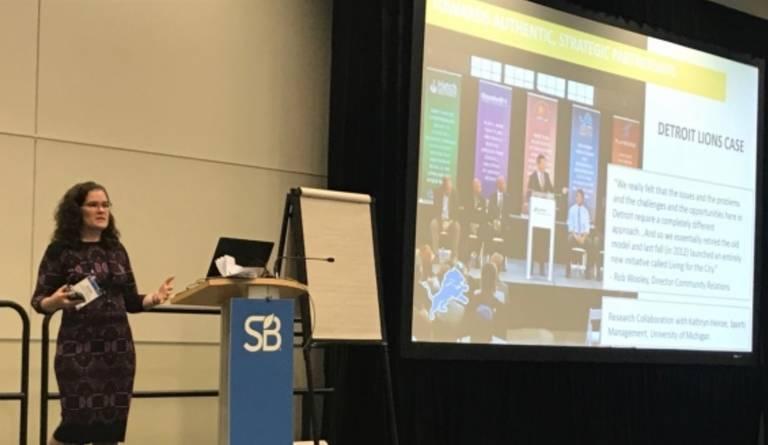

Erb Institute Faculty Sara Soderstrom takes center stage at Sustainable Brands 2018
By Allison Burtka
Purposeful partnerships
June 6, 2018
“Society is now expecting more from businesses,” said Sara Soderstrom, assistant professor of Organizational Studies and Program in the Environment at the University of Michigan, in the session “Company-Community Partnerships for Purpose and Sustainable Impact.” She explained that tensions exist between aspirations and objectives, and she used President John F. Kennedy’s approach to putting a man on the moon as an example: The aspiration was to advance science, and putting a man on the moon was an objective that served to advance science.
Soderstrom also highlighted how the Detroit Lions team has built partnerships to benefit Detroit residents—in ways that make sense for the Lions. The process has required the team’s humility in being willing to learn about the city’s needs, and the team has chosen partners that aligned well. For example, the Lions’ knowledge of health and wellness made them a good match for Playworks, an organization that helps kids stay active and build skills through play. This kind of match helps build sustainable partnerships.
Brands that take stands
On the third day of SB18, several companies served as examples of brands that take a stand—even when doing so is highly risky to their business. Jennifer Lindenauer, chief marketing officer at Upworthy, pointed to Patagonia’s bold message to the public on public lands—“The president stole your land”—and Dick’s Sporting Goods’ decision after the Parkland shooting to stop selling assault-style rifles and to stop selling any guns to customers under 21.
REI Vice President of Brand Stewardship & Impact Alex Thompson described the physical and mental harm that results when people don’t spend much time outdoors, and how the company set out to change that. With its #OptOutside campaign, REI offered consumers “the choice to do something other than consume,” and 700 organizations have joined in the initiative. He also explained that getting people outdoors transforms sustainability from a series of concepts into lived experiences. “You cannot paddle and not care about clean water,” he said.
A broad approach to design
June 5, 2018
The theme of SB18 is “redesigning the good life.” On the conference’s second day, Cheryl Heller, founding chair of the MFA in Design for Social Innovation, SVA, at Design for Social Innovation, explored the topic of social design and how it is creating new markets and more creative, engaged culture. Beyond logos and product design, she talked about designing what’s invisible and designing for relationships instead of transactions. She cited Airbnb as an example—its design “disrupts what we thought we wanted,” she said.
Heller also suggested a shift from trying to solve problems to figuring out what you want and then creating it, noting that real discovery sometimes requires not knowing the answers.
The anti-burger burger joint
A Swedish hamburger chain offered an example of a company making bold changes in its business, including going “climate positive.” Max Burgers measured its emissions and found that 53 percent of them were from beef. Even though the company’s core product is a classic beef burger, that burger is a “climate villain,” said Kaj Török, chief reputation officer and chief sustainability officer. So the company set out to reduce the number of beef burgers it sells and increase the number of other types of burgers.
Regarding carbon emissions, “going neutral isn’t enough,” Török said. The company recognized that it is part of the problem, so it wanted to be part of the solution as well. It is going climate positive by planting trees to capture the equivalent of 110 percent of its emissions. To educate and involve customers, Max Burgers put the climate impact of different menu options on the menu.
Allison Burtka is staff writer for University of Michigan: the Erb Institute | Business for Sustainability
Photo: Erb Institute/Business for Sustainability/
Originally distributed by 3BL Media.
How Companies Harness the Power of Trees to Advance Their Sustainability Goals and Bottom Lines


By Dan Lambe, president of the Arbor Day Foundation
With all the global issues we face today — including poor air and water quality, climate risk, deforestation, poverty, and hunger — more and more corporations are taking a proactive step to become part of the solution. And they are turning to trees to make a difference.
Companies are drawn to tree planting and forests because there is an emotional and intuitive connection between trees and sustainability. Trees and forests also have the power to address some serious climate risk issues and that has caught the eye and attention of investors. Planting trees is a simple, elegant and serious strategy to combating the biggest challenges facing companies, their employees, their supply chains, their customers and the world today. And it is scalable.
Tree planting is a proven approach to solving challenging problems on a worldwide scale. Because trees provide the necessities of life itself — and the beneficiaries of trees are people. They filter pollutants out of the air and water while protecting us from dangerous heat and flooding. They lower urban temperatures, reduce energy use and sequester carbon to slow the rate of climate change. Resources from forests help to keep people out of extreme poverty. Green environments encourage physical activity, improve cognitive ability and reduce stress. And trees foster community engagement and connectivity in a unique and positive way.
Tree planting in action
Efforts are underway through the Arbor Day Foundation and other like-minded conservation organizations such as the National Forest Foundation, The Nature Conservancy and many others to plant trees throughout the U.S. and around the globe. These efforts are happening strategically in National Forests, rain forests and the cities and towns that make up our urban forest.
The reasons for planting vary greatly. Oftentimes, we replant in forests and communities after natural disasters such as wildfires, floods, hurricanes, tornadoes, invasive insects or disease. Other planting projects are located in areas that were previously cleared due to mining, past unsustainable forest management or land use change. Regardless of the reason, the goal is always the same: improve tree canopy cover and inspire sustainable forestry practices.
Procter & Gamble Family Care is one of the many corporate partners the Arbor Day Foundation works with regularly. Most recently, this partnership has focused on tree planting projects to improve urban forests. Their support has helped to revitalize lower-income neighborhoods, create welcoming community spaces and help residents enjoy all the life-giving benefits trees provide. It’s exciting to see an organization of this size focus in on making a measurable impact for their employees and their customers.
The compounding effect
There is a compounding effect of so many corporations getting involved in tree planting, as each tree makes a measurable difference. One tree can grow to remove an average of 11.56 pounds of chemical air pollution and .317 pounds of particulate matter, capture 160 pounds of carbon, and intercept 71 cubic meters of water runoff.* Research tools created with the Arbor Day Foundation’s public and private partners enables us to quantify the value of trees based on the type, location and size. This is an effective way for organizations to tell a more complete story about the impact they are making through their work planting trees. These numbers tell a powerful narrative to employees, investors, customers and the world. In addition, these trees can make a positive impact on many of the 17 Sustainable Development Goals designed by world leaders to improve conditions on our planet by 2030.
Involvement with tree planting organizations also helps companies enhance employee and community engagement connections. Corporations are creating unique opportunities to plant trees in neighborhoods with low canopy cover, distribute trees after a community has been devastated by a natural disaster or revitalize a nearby barren space into healthy forestland. This type of outreach and community investment creates goodwill among employees and customers as the trees transform the neighborhoods in which they live, work and play. It further creates a defining link to the broader sustainability efforts of companies.
The Time for trees
If ever there was a time to plant trees, now is that time. More and more companies have come to the realization that this is the time for trees. The time to harness the natural solutions of trees and forests to solve some of the biggest challenges they have ever faced.
We are proud to be advancing this dialogue and working with companies to bring new innovations and strategies to sustainability and business challenges through trees.
Tomorrow is relying on what we do today. Let’s make every tree count.
* U.S. Forest Service analysis based on native-species trees planted in Pennsylvania with a 97 percent annual survival rate, three percent mortality every year, for 100 years.
Image credit anna chara via Flickr Creative Commons
What Corporate Leaders Are Saying About the Business of Gender Equity
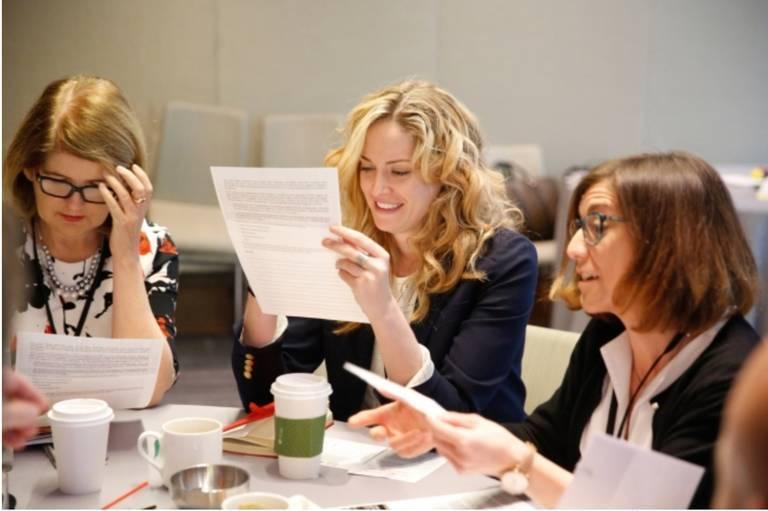

By Laura Herman
In the age of #metoo and #timesup, companies are eager to strategically consider how best to strive for gender equity within their organizations. Moving beyond technical fixes in the HR policies and practices, companies are increasingly seeing opportunities for improved competitiveness as they consider the role of women inside and outside their organization’s walls.
We had several illuminating conversations about the intersection of gender equity and shared value last week at the Shared Value Leadership Summit. The Summit brings together approximately 400 global leaders every year in New York to explore opportunities for shared value across industries and geographies.
To kick off the Summit, we hosted a dozen business leaders in partnership with Win-Win Strategies for a dynamic dinner discussion about how their companies are setting the stage for long-term investments in gender equity. This includes building the business case for investing in women, and aligning strategies across the value chain, internal operations, CSR and philanthropy that support core business objectives.
The participants came from diverse industries including retail, food and beverage, financial services and more. Many expressed that while macro studies like the Power of Parity and others over the last decade are powerful, they don’t reflect individual company strategies, and hence, don’t go far enough in helping executives who are trying to make the economic argument for gender equity and design strategies that drive impact at multiple levels. Similarly, the many studies that explore intersectionality and link all kinds of diversity with improvements in typical business yardsticks (like return-on-sales and earnings-per-share) haven’t been fully convincing when it comes to building consensus around how to prioritize and pursue gender equity with the same zeal as other business imperatives. Overall, there was a real appetite amongst participants for greater specificity in terms of defining the business benefit and strategies in order to effectively make the case for investing more intentionally in gender equity.
On the second day of the Summit, I spoke with Stephen Puig, the CEO of Banco BHD Leon in the Dominican Republic and Elizabeth Vasquez, CEO of WeConnect, about specific opportunities in serving women consumers and in connecting women to corporate supply chains.
Stephen shared the bank’s success in enrolling women in credit and savings products and how their campaigns to target women also sought to raise awareness around intimate partner violence—an issue that affects a third of women globally. This campaign resonated strongly with the millennial consumers in the Dominican Republic, a tough-to-reach segment for retail banks. In addition to creating social impact and building a relationship with the millennial market, the campaign has had a 100 percent rate of return since the launch, leading to a 13 percent increase of female customers per year over the last 4 years and boosting the number of products sold to women customers from $600,000 to $1.1 million per year.
On the supply side, gender has been insufficiently taken into consideration along the supply chain despite emerging evidence on the lost business potential in these areas. This includes both hiring women into supply chain roles within firms and procuring from women-owned businesses and suppliers in company supply chains. Elizabeth shared how companies who are indeed sourcing from women-owned business are enjoying improvements in the reliability and quality of procurement. These are not “cute” arrangements with women’s cooperatives. Elizabeth cited multiple examples of women business owners she’s worked with recently during our conversation, including one in Bangladesh who employs 20,000 people in the textile industry and another whose company makes 62 million garments a year for their partnership with Walmart. These are multimillion-dollar deals with women-owned firms that can employ tens of thousands of employees—many of whom are also women.
These 2 stark examples of how gender equity yields measurable business benefits were powerful testimony to the opportunities companies have to create shared value by applying a gender lens to their work.
The closing speaker of the Summit was former Secretary of State, and the first female presidential candidate in the U.S., Hillary Rodham Clinton. Secretary Clinton had many insights for the audience, but among her most emphatic points were those related to women in business and what she has seen in the global market.
She reiterated the important points around inclusive supply chains and brought additional texture to the points around how companies can succeed by driving relentlessly towards increasing the number of women in business leadership, remarking that, “Every country, including ours, is leaving GDP on the table because we have not empowered women to be more involved in business or rewarded for their involvement.”
Her emphatic statement that if we want to grow the global economy, we need to open the door for women, left us all excited for the potential for more companies to see gender equity as a critical lever for driving their own shared value strategies.
Laura Herman is Managing Director, FSG
Photo: FSG
Originally published on fsg.com and distributed by 3BL Media.
Paying for Resilience: Market Drivers and Financial Means


When I worked for the City of Chicago applying its Climate Action Plan, our work was funded by the lack of climate resilience: The City had successfully sued the electric utility for failing to provide service during an extreme heat event, and the settlement paid for many staff and climate-related. That’s a rare situation, though. Today, requests from cities, nonprofits and philanthropy to figure out finance to help fulfill resilience dreams fill my inbox.
In the last few months, I’ve offered counsel to cities as diverse as Minot, N.D. (at the invitation of FEMA), Miami Beach (at the invitation of the Urban Land Institute) and Buras, La. (at the request of the Rockefeller Foundation 100 Resilient Cities). Speaking with these local and innovative government leaders has helped me refine my own understanding of the current state of resilience finance in the U.S.
Here are at least four market inspirations I have gleaned that could drive more resilience finance:
- In its report “Climate Adaptation and Liability,” the Conservation Law Foundation unveils numerous cases describing a new era in the “duty to care” for designers, real estate professionals and municipal government officials as events that future climate scenarios envision replace force majeur events.
- Although the federal National Flood Insurance Program distorts price signals in the risk transfer elements of the market – and I strongly encourage you to engage on its reauthorization, perhaps starting by reviewing this excellent piece – in such highly vulnerable markets as Houston and Miami, an insurance price signal is emerging as flood insurance premiums rise faster there than elsewhere.
- Credit rating. Moody’s and Standard & Poor’s have made announcements that the physical risks from climate change will be factored into municipal credit ratings, and S&P has been clearer about this impact, for instance as shown in the article How Our U.S. Local Government Criteria Weather Climate Risk. Municipalities don’t want their debt to be more expensive and, therefore, less attractive to investors, so this is a big deal.
- Big data. With the emergence of big data modelers such as Airworldwide, RMS and Core Logic in the past decade, more financial services professionals will have growing access to the cost of both actual and avoided loss from extreme events. While cities cannot afford these big modelers, financial sector parties are applying them to city problems and generating new methods to create “bankability” – revenue generation from projects that traditionally don’t generate rates or fees. For instance, resilience bonds, described in a very approachable way by re:focus partners in this report, link future insurance savings to a bank of funds for current risk mitigation projects.
Along with these drivers, progress continues in the debt market, creating more means to fund city resilience. Most importantly, that headway should include a swift pivot of general obligation bonds from traditional investments that neither create collateral benefits nor consider climate change scenarios to resilience investments promising more long-term return and performance given future risk. That is really the only way to ensure we create resilient cities. But with close to 80,000 issuers of municipal bonds in the country, the four key drivers above are key for ensuring this transition.
At the same time, the growth of innovative bond mechanisms could also help cities increase funds for resilience. The District of Columbia has had success with green bonds for its water and sewer authority, while the Massachusetts Bay Transit Authority has created excellent examples of sustainability bonds’ utility. The resilience bonds mentioned above are another in this category. Of course, catastrophe bonds – some with hurricane triggers – are another insurance-linked mechanism for getting money to cities after disasters.
In a future post, I will suggest ways cities can invite more resilience finance, given these market levers and financial means.
Garnier Is Latest L’Oreal USA Brand to Tout Cradle to Cradle Certification


Cosmetics giant L’Oreal USA is doubling down on its commitment to certify that its product portfolio is environmentally and socially responsible.
The rewards for getting it right are enormous, as the U.S. skin care market is expected to reach $11 billion this year. The fastest growing products in this sector, driven by younger buyers, are natural and organic skin care products, according to Nutrition Business Journal.
While startups and boutique players often launch with natural product lines, entrenched industry leaders are keen to make consumers aware that a growing portfolio of their legacy skin care remedies are getting high ratings for material health, material reuse, renewable energy, water stewardship and social fairness.
At Sustainable Brands in Vancouver, L’Oreal USA touted its track record of success with the non-profit Cradle to Cradle Products Innovation Institute, the administrator of the Cradle to Cradle certification, and MBDC, a third-party assessor founded by William McDonough and Michael Braungart.
Along with prior certifications for the L’Oreal-owned Kiehl’s and Biolage lines, the company added five Garnier skincare products to carry the Cradle to Cradle certification.
The products are: Garnier SkinActive Deep Pore Facial Cleanser with Green Tea, Garnier SkinActive Refreshing Facial Cleanser with Aloe Juice, Garnier SkinActive Soothing Cleansing Milk with Rose Water, Garnier SkinActive Deep Pore Exfoliating Face Scrub with Green Tea, and Garnier SkinActive Refreshing Cream Cleanser with Aloe Juice.
“They’re the first mass-market skin care brand to launch a Cradle to Cradle certified product,” said Danielle Azoulay, head of CSR and sustainability for L'Oreal USA. “To launch with multiple products is also a unique achievement within the Cradle to Cradle world, so we’re really pleased about this achievement.”
3BL Media had the opportunity to discuss the growing importance of corporate responsibility in the personal care industry with Azoulay during Sustainable Brands. Watch the full interview here:
Ice Box Challenge an Artistic Ploy to Encourage Better Buildings


No, this isn’t the ice bucket challenge for ALS research that was all the rage a few years ago. This is a different kind of challenge, one that is also beneficial in a different way.
I am talking about the Ice Box Challenge, a global competition that is encouraging designers, architects - and really anyone - to find ways to make homes more energy efficient and comfortable. Think of this challenge as a beefed-up science fair competition: ice boxes are constructed, usually left outside in the sun for 18 days, and then the amount of ice left inside the boxes is measured. The goal is to find ways to reduce society’s carbon footprint without changing our lifestyle.
For over a decade, this challenge has spread the word by being a global road show, starting in Brussels and since moving to cities such as Vancouver, Chicago and Seattle. Last month, the competition moved to New York.
The competition was an architectural take on the classic “how many jelly beans are in the jar” contest. Two boxes, each containing 1,800 pounds of ice, were displayed under Manhattan’s sun in the Garment District at Broadway and 39th Street for over a month until May 23. As usual, one box was built to standard building codes while the other was assembled following the uber-insulated Passive House Standard. In a bid to garner more interest from the public, the boxes were decorated by a Brussels street artist. Visitors were encouraged to guess how much ice would remain in each box for a chance to win prizes such as a trip to Brussels.
The results offered a reminder of how engineers, architects and developers could be more inspired to work together to build more energy efficient buildings. After a month, the Passive House Standard box melted down to 756 pounds, 42% of its original size The other box, constructed with standard construction methods, had only 126 pounds of ice left, or just 7% of its original size.
“The Ice Box Challenge is a visually engaging demonstration for New Yorkers that underscores the incredible opportunities we have to improve energy efficiency in buildings, which is crucial both to battling global climate change and to creating a fairer, healthier city,” Mark Chambers, director of New York mayor’s office of sustainability, said in a public statement.
The overriding challenge, of course, is to find ways to allow these construction methods to actually scale and become cost-effective. Nevertheless, tactics such as the Ice Box Challenge are one way to instill why green building matters when it comes to our homes and offices – and tenants and homeowners will buy in when they can see efficient buildings are comfortable buildings – with lower utility costs and a healthier built environment, too.
Image credit: Alexandre Ayer
Data Paralysis and Over-Ambition: Are They Robbing Your Sustainability Team’s Momentum?
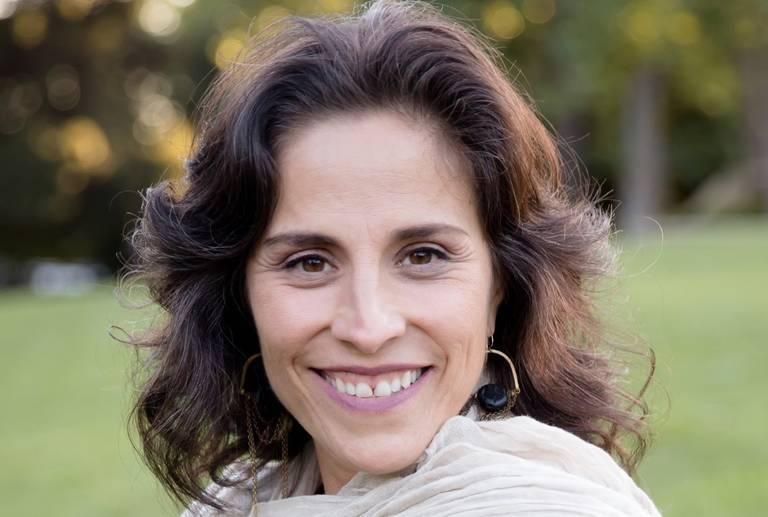

By Nikki Pava
The fossil fuels you use each day took 300 million years to form. Americans used about 50 billion plastic water bottles last year alone. What on earth is your team supposed to do with statistics of this magnitude? It seems that your every action matters, and at the same time, no change could possibly be enough.
While it is important to have a firm grasp on the big-picture reality of the effects of business choices and the seriousness of the many environmental threats to the planet, it is equally important that Sustainability Teams in companies avoid two common pitfalls when formulating their corporate response: paralysis and over-ambition.
Paralysis: All actions add up.
Don’t become so overwhelmed by the numbers gathered from preliminary research for a new sustainability initiative that you hesitate to put a plan in motion. Movement in the right direction will begin to add up and even the smallest micro-changes will have an impact. Environmental and social change builds from the bottom up and has a ripple effect that will reach all levels of the company, in addition to all stakeholders, over time. (For more on this see my recent Triple Pundit post: Climate Leaders Take Cues From Nature To Inspire Optimism.)
Over-ambition: Be aware of your limits.
Take inventory of your capacity. A team of employees mandated by the company to work on sustainability issues will have a different capacity than a team of volunteers that is focusing on environmental and social issues in their free time. Additionally, it is helpful to set goals and milestones that are attainable. For example, a newly-formed Sustainability Team focused on decreasing their company’s waste stream by 25% in six months will not achieve its goals until a good employee engagement program focused on recycling and composting is developed and used over time. Such a meaningful change requires a fundamental shift in the habits and patterns of company employees.
There’s a fine line between “being ambitious,” which is an important characteristic for any individual or team to possess, and “over-ambition,” which can create exhaustion and fatigue. In terms of momentum-killers, over-commitment is second only to apathy. Where apathy accomplishes nothing, over-ambition tries to accomplish everything, inevitably leading to rapid burnout and ultimately, disengagement. In addition to producing few lasting results, such a turbulent introduction to the work of sustainability will leave a bad taste in the mouth of your team members, potentially preventing future successes.
There are a myriad of psychological studies linking effort-reward imbalance and over-commitment in the workplace to psychological stress, depression, and other breakdowns in health. The same principles hold true for Sustainability Teams.
“Organizations with high initiative fatigue frequently suffer from the failure to build a powerful leadership coalition and lack an engagement effort that connects the initiative to the daily routines of the affected employees” (32).
-Adam Werbach Strategy for Sustainability: A Business Manifesto
The 2016 Bain Sustainability and Change Survey found that out of 301 companies engaged in sustainability transformations, only 2% met or exceeded their sustainability goals. 81% reported diluted results and 16% failed to achieve even half of their original projections. That doesn’t mean these teams didn’t accomplish meaningful work, but it does mean they missed a crucial chance to build momentum for long-term change.
In order to decrease or even eliminate paralysis and over-ambition, Melissa Malkin-Weber, Sustainability Director of Self-Help Credit Union and Ventures Fund (SHCU), encourages new teams to “find small things that are non-symbolic to do at first and then build up.” When the first thing your Sustainability Team does is aim too high and miss the mark, you risk losing company trust and stakeholder investment before you’ve even begun.
As your Sustainability Team gets off the ground, it is important to generate momentum and investment before successfully tackling macro-level changes. “Sustainability Teams build their ability to impact an organization,” Malkin-Weber explains, “by demonstrating value and results.” To best accomplish this, she encourages teams to “find projects that are both meaningful AND provide a payback for the organization.”
Malkin-Weber knows how effective this model is, because her job is the result! SHCU’s Environmental Stewardship Committee started as a grassroots employee campaign to transform SHCU into a triple bottom line organization. As the team established themselves, they focused on generating small sustainability wins like finding ways to eliminate Styrofoam in break rooms.
One of their early initiatives, “The Great Paper Smackdown,” was an interoffice competition. Each floor of the building competed to see who could use the least amount of paper in a set period of time. The initiative was fun, free, and saved the company money. It also was a great opportunity for the team to reach out to new members and create a positive atmosphere around their work.
As these small successes garnered support and engagement, the team set their sights on bigger and bigger projects. Eventually, they realized they needed full-time support to reach their now lofty goals. So, several team members used their fundraising skills to secure a grant so SHCU could hire a full-time Sustainability Director. Shortly after, Malkin-Weber was hired as the organization’s first Green Initiatives Manager.
To avoid paralysis, develop initiatives and goals that can be integrated into the company’s model and culture in sustainable ways. Teams that focus on a company’s climate change milestones are extremely important at this moment in time. Use that energy and excitement to do anything possible to decrease waste, energy, and water use, however, be aware that over-ambitious plans can have a negative impact on a Sustainability Team’s momentum.
When employees truly desire to do meaningful work and integrate the company’s sustainability initiatives with the employee’s daily responsibilities, and managers, owners, and other leaders understand the capacity of the employees, that company’s possibilities to impact global transformation are endless – despite the overwhelming data.
Nikki Pava is the founder of Alegria Partners, which works with entrepreneurs and business leaders to design, implement and measure profitable sustainability strategies for their companies.
Photo: Nikki Pava
On this Summer’s Barbeque Menu: Sustainable Palm Oil
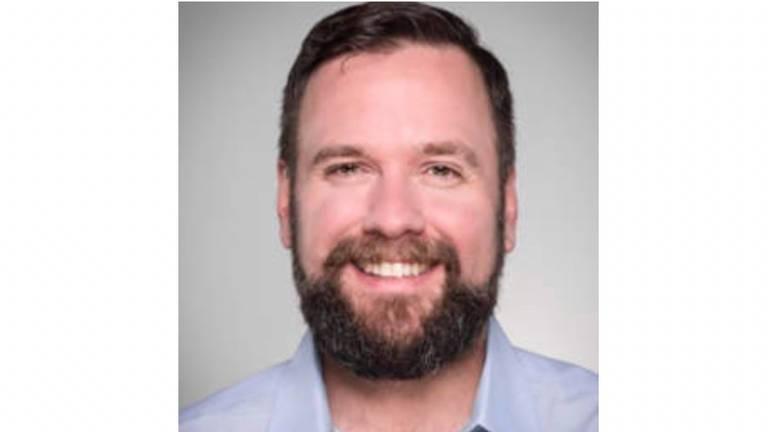

By Dan Strechay
On the heels of Memorial Day, a day which many consider the official beginning of summer – and along with it, barbeque season – grocery stores stock up on burgers, hot dogs, buns and condiments to satisfy the masses preparing for long summer days and warm nights at backyard barbeques with neighbors, friends and family.
The little-known common denominator in many of these staple summer barbeque favorites? Palm oil. In fact, palm oil is the world’s most commonly consumed vegetable oil and is estimated to be an ingredient in half of the products we find on the grocery store shelves today.[1] It’s especially widespread in packaged and processed foods because of its stabilizing qualities and ability to improve texture.
Thankfully, major food companies and retailers are increasingly paying closer attention to their palm oil sourcing practices and seeking to gain more visibility into their supply chain. The reason why is simple. As a result of unsustainable palm oil production over the past century, there have been serious social and environmental consequences: significant clearing of tropical rainforests to build palm oil plantations, habitat destruction for endangered species, increased greenhouse gas emission further contributing to climate change, and on top of all that, forced labor and other human rights abuses that have negatively impacted palm oil sourcing communities.
The good news is that a progress is gaining momentum in the food industry; as demand for increased transparency continues to grow among industry stakeholders, consumer advocates, and consumers themselves, many major food brands are taking action. They have the power to ensure that the palm oil and palm oil kernel used in their products is grown and sourced in a sustainable, responsible way.
This process will be a journey, and there is lots more work to be done. However, many food companies have already taken an important first step toward sustainable production by becoming members of the Roundtable on Sustainable Palm Oil (RSPO) and getting their products RSPO certified. RPSO certification is a globally recognized set of standards that help verify companies making sustainable palm oil claims – thus improving consumer confidence in their products. At the same time, the RSPO trademark and Supply Chain Certification give businesses the assurance that the palm oil in their supply chain meets our global Principles & Criteria for sustainable palm oil production, which is currently being revised based on engagement with RSPO members and the public.
After receiving consistent feedback from strategic partners that there was a need for more industry collaboration to accelerate demand for sustainable palm oil, RSPO launched the North American Sustainable Palm Oil Network (NASPON) in December 2017. NASPON collaborators include associations, civil society organizations, consumer goods manufacturers, food-service retailers, and palm oil traders and producers. The group aims to educate, build momentum and help North American companies in making and delivering on their commitments to source sustainable palm oil. This is especially worth noting as grills are fired up nationwide this summer.
Many food brands have already signed on to NASPON, including Dunkin Brands, Kraft Heinz, PepsiCo, Albertsons Companies and more. In 2017, Kraft Heinz, a RSPO member, announced its commitment to the use of 100 percent RSPO certified product offerings across all its products and business units.
Kraft Heinz is well-known for its production of ketchup and mustard, as well as, other great barbeque pairings, and will certainly be busy this summer making sure that all those burgers and hot dogs are well covered with America’s favorite condiments. Other food brands, large and small, should use this summer to consider what they can do to amplify the use of sustainably produced palm oil. Collectively, we can have a positive impact on sourcing communities, the environment and human and labor rights within the palm oil supply chain.
Dan Strechay is U.S. Representative, Outreach and Engagement, RSPO
Photo: RSPO
[1] https://www.worldwildlife.org/pages/which-everyday-products-contain-palm-oil
Ocean Plastics Top Agenda for G7 Leaders – But Giant Consumer Brands Can Take the Lead
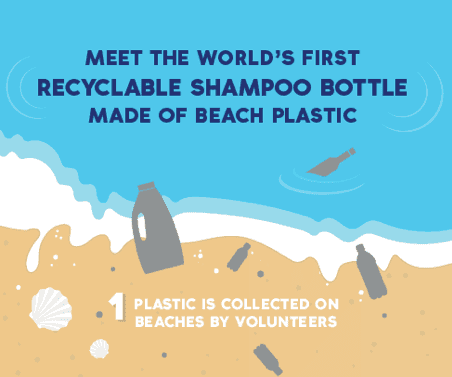

As world leaders gather in Canada for the G7 summit today, the topic of ocean plastic pollution is prominent on the agenda.
Stemming the tide of bags, bottles and other plastic packaging fouling our seas was also a priority for some 2,000 sustainability and corporate responsibility practitioners who gathered this week in Vancouver at the annual Sustainable Brands conference.
Consumer products giant Procter & Gamble illustrated its work tackling marine pollution through an interactive exhibit at the conference explaining how Head & Shoulders shampoo bottles now contain recycled plastic collected from beaches. The brand is supporting World Oceans Day June 8 and has been working with TerraCycle and Suez on the bottle collection and recycling program.
By 2030, P&G pledges to make all its packaging fully recyclable or reusable, power its manufacturing facilities with 100 percent renewable energy and have zero consumer and manufacturing waste go to landfills. Progress against these goals can be found in the company’s recently published citizenship report.
At Sustainable Brands, we spoke with Virginie Helias, vice president of global sustainability for P&G, to hear how the Cincinnati-based CPG company will attack the ocean plastics crisis as part of a progressive ESG agenda that also includes dialog with consumers about responsible consumption.
“We are really here talking about partnering with the 5 million people we serve everyday through our brands and leveraging the nearly 200 years of innovation at P&G to enable and inspire responsible consumption,” said Helias.
Image credit: Procter & Gamble